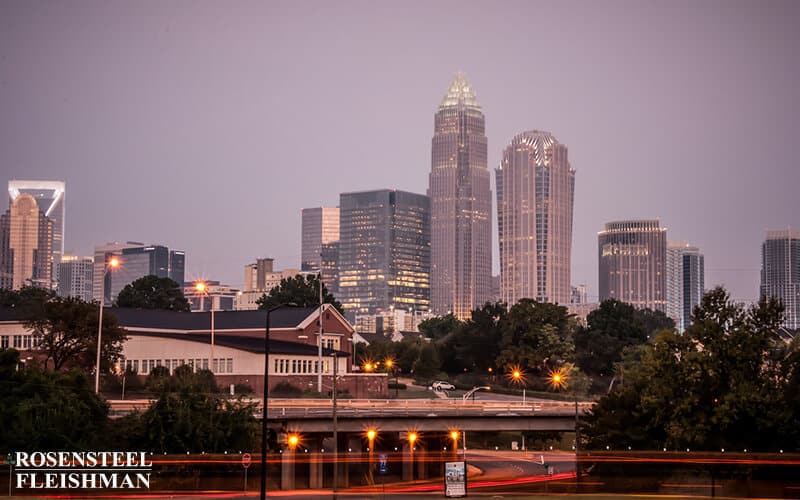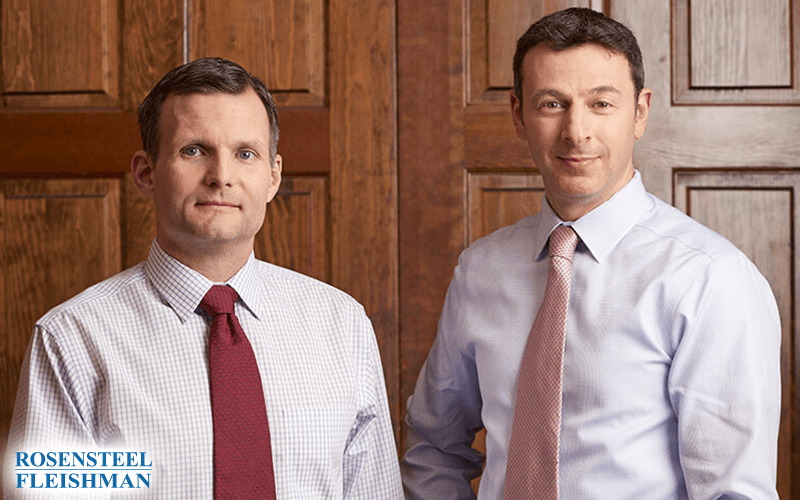When you’ve been in a serious car accident, the aftermath can be confusing and overwhelming. Medical appointments, insurance calls, lost wages, and physical recovery all start piling up quickly. Many people don’t even realize the full impact of a wreck until days or weeks later when the pain sets in, or when insurance companies start […]

Charlotte Area One of Worst for Pedestrian Safety
WSOC-TV reports that 300 people were hit by cars last year in the Charlotte-Gastonia-Concord area. A recently released report found that the Charlotte-Gastonia-Concord area is the tenth worst in the country for danger to pedestrians. One of the authors of this report explained that when city planners were expanding roads in the area years ago, they were only thinking of how to move traffic faster. Therefore, current roads are easier for cars to travel fast, and there are fewer crosswalks and sidewalks. In response to this concern, CDOT has been retrofitting old roads to add crosswalks, sidewalks and islands. For new roads, there are urban street guidelines, which include specifics regarding bike lanes, sidewalks, crosswalks, and the curve of the road so that cars see pedestrians sooner. The safety of pedestrians is concerning because pedestrians clearly are no match for cars and a collision between the two will have far worse effects on the pedestrian than the car. This all leads us to consider what the rights of pedestrians are under North Carolina law.
North Carolina G.S. 20-155(c) states that
The driver of any vehicle upon a highway within a business or residence district shall yield the right-of-way to a pedestrian crossing such highway within any clearly marked crosswalk, or any regular pedestrian crossing included in the prolongation of the lateral boundary lines of the adjacent sidewalk at the end of a block, except at intersections where the movement of traffic is being regulated by traffic officers or traffic direction devices.
Furthermore, G.S. 20-173 states that
(a) Where traffic-control signals are not in place or in operation the driver of a vehicle shall yield the right-of-way, slowing down or stopping if need be to so yield, to a pedestrian crossing the roadway within any marked crosswalk or within any unmarked crosswalk at or near an intersection, except as otherwise provided in Part 11 of this Article.
(b) Whenever any vehicle is stopped at a marked crosswalk or at any unmarked crosswalk at an intersection to permit a pedestrian to cross the roadway, the driver of any other vehicle approaching from the rear shall not overtake and pass such stopped vehicle.
(c) The driver of a vehicle emerging from or entering an alley, building entrance, private road, or driveway shall yield the right-of-way to any pedestrian, or person riding a bicycle, approaching on any sidewalk or walkway extending across such alley, building entrance, road, or driveway.
Therefore, pedestrians have the right of way in any crosswalk and in the imaginary boundary line connecting adjacent sidewalks at the end of of block, except at intersections where there are devices controlling traffic direction. However, the concerns of the report are the many areas which have no sidewalks or crosswalks. Does this mean that pedestrians are out of luck for recovering damages for injuries if they are hit in one of these many areas which have no sidewalks or crosswalks?
In most states, a plaintiff’s recovery of damages is reduced if he is also negligent. However, North Carolina is one of the few states which follows the stricter standard of contributory negligence. In North Carolina, a plaintiff’s contributory negligence can bar him from collecting damages from a negligent defendant. North Carolina law states that “[a] plaintiff is contributorily negligent when he fails to exercise such care as an ordinarily prudent person would exercise under the circumstances in order to avoid injury.” The doctrine of contributory negligence requires a victim to use reasonable care as a pedestrian. In order for contributory negligence to keep a victim from receiving damages, the victim’s negligent behavior must be a proximate cause of the accident and contribute to the plaintiff’s injury.
One exception to the rule of contributory negligence is the last clear chance doctrine. The North Carolina Supreme Court has set out four elements which must be met under the last clear chance doctrine.
Where an injured pedestrian who has been guilty of contributory negligence invokes the last clear chance or discovered peril doctrine against the driver of a motor vehicle which struck and injured him, he must establish these four elements: (1) That the pedestrian negligently placed himself in a position of peril from which he could not escape by the exercise of reasonable care; (2) that the motorist knew, or by the exercise of reasonable care could have discovered, the pedestrian's perilous position and his incapacity to escape from it before the endangered pedestrian suffered injury at his hands; (3) that the motorist had the time and means to avoid injury to the endangered pedestrian by the exercise of reasonable care after he discovered, or should have discovered, the pedestrian's perilous position and his incapacity to escape from it; and (4) that the motorist negligently failed to use the available time and means to avoid injury to the endangered pedestrian, and for that reason struck and injured him.
Therefore, under the last clear chance doctrine, a motorist cannot run down a pedestrian simply because the pedestrian is crossing the street outside of a crosswalk or intersection. If the motorist sees or should see the pedestrian and can avoid hitting the pedestrian, then the motorist is obligated under the last clear chance doctrine to use reasonable care to avoid hitting the pedestrian. The recommendation of the CDOT’s urban street guidelines regarding the curve of the roads so that cars can see pedestrians sooner would directly impact the application of the last clear chance doctrine.
If you have been injured as a pedestrian in a car accident, contact Rosensteel Fleishman Car Accident & Injury Lawyers (704) 714-1450, to talk with an attorney about your options.
Additional Law Articles Articles
Losing a loved one suddenly is devastating. When that loss happens in a preventable accident, the grief can be compounded by questions, frustration, and uncertainty about what to do next. In Hertford, North Carolina, families are still feeling the impact of a tragic helicopter crash that occurred on September 8, 2017. The crash claimed four […]
Getting into a car accident is overwhelming enough without the added stress of dealing with insurance companies. Between the confusing paperwork, the constant phone calls, and the pressure to settle quickly, many people feel lost during a time when they should be focused on recovery. It’s easy to assume the insurance company will handle everything […]
Getting into a car accident is stressful enough, but when the at-fault driver doesn’t have insurance, things can feel even more overwhelming. You might be left wondering how to pay for your medical bills, car repairs, or missed work. In these situations, many people feel stuck, unsure of what steps to take next or whether […]
